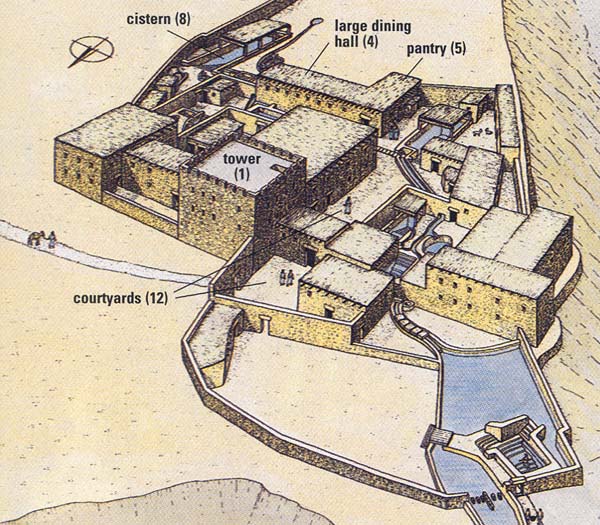Image Details

Leen Ritmeyer
The sprawling Qumran settlement—shown in one possible reconstruction of the site—lacks the artful design of Herodian palaces, suggesting that the buildings were not arranged to please the eye but to facilitate the daily work of the community living there.
No elaborate landscaping made the surrounding terrace inviting to picnickers. Rather, a cemetery lay just outside the settlement—a find unparalleled at any of the palatial residences discussed in this article. The large dining hall is comparable in size to that of Hilkiah’s palace, but it lacks interior decoration.
A substantial water system snaked through the grounds, as shown in blue in the plan, indicating that although the residents clearly had the necessary skills, they chose not to build swimming pools or Roman-style baths. Their apparent refusal to design Qumran for a life of leisure and entertainment reinforces excavator Roland de Vaux’s identification of the site as a sectarian settlement.
